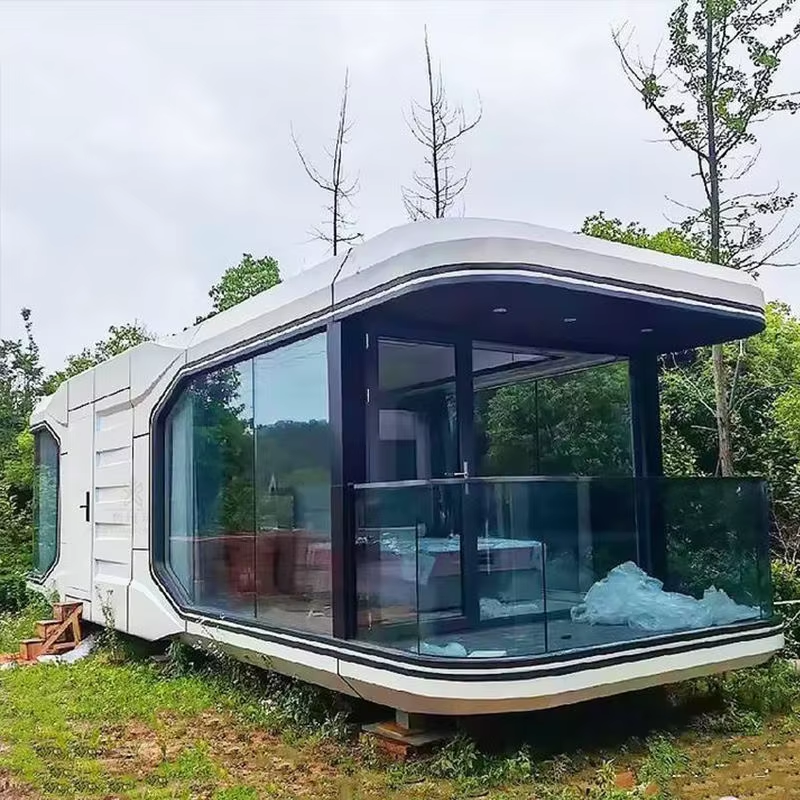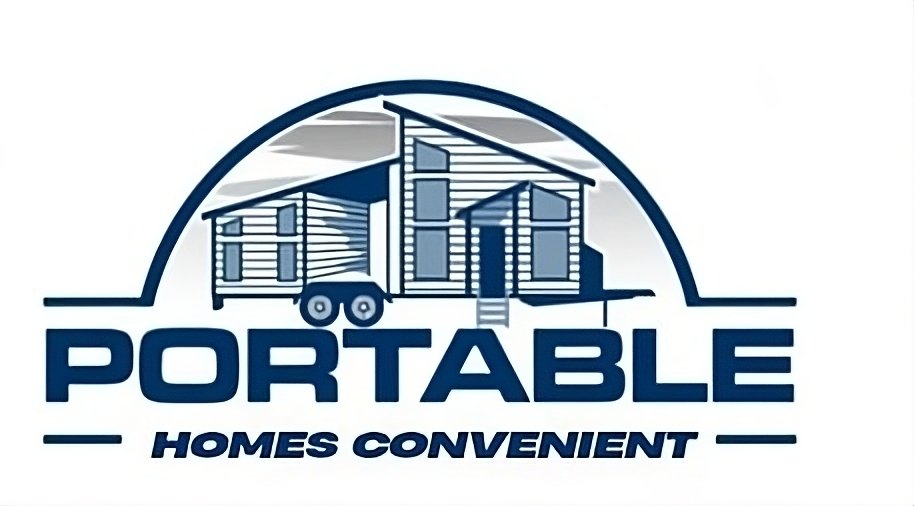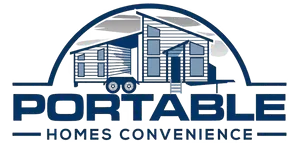
The needs of housing are changing. People are now looking for cheaper, more suitable options that fit their lifestyles and reflect environmental concerns. Portable homes are emerging as a strong alternative. Flexible, affordable, and often eco-friendly, portable homes including modular homes, prefab homes, and tiny houses provide viable solutions to traditional housing. But how do the costs really compare?
This article presents a detailed cost analysis of portable homes vs traditional homes, helping you decide which is best based on your financial and personal needs.
What Are the Best Portable Homes?
Portable homes also referred to as prefab homes, modular homes, or manufactured homes are built in off-site facilities and transported to their final location. Whether you’re looking at tiny homes for sale or the best portable homes for sale, the benefits often include sustainability, affordability, and quick setup.
Key Features:
- Factory-manufactured and delivered to the site.
- Could be installed on rented or owned land
- Usually consists of small, compact designs with significant layout alternatives
- Usually more energy efficient than older traditional homes
What Are Traditional Homes?
The normal houses are site-built. Most of them are present on permanent foundations and constructed by going through the procedure of building from the ground. Generally, these homes are larger, made with brick, wood, or concrete, and offer more architectural and internal customizations, as well as landscaping customizations.
Key Features:
- Built directly on-site
- More permanent and stable
- Generally larger.
- Tends to appreciate in value over time.
Cost Breakdown: Portable Homes vs Traditional Homes
Let’s delve into the key cost factors involved in any type of housing to better understand what would be more pocket-friendly.
1. Initial Purchase Price
Portable Homes:
Portable homes may cost anywhere from 40000 to 150000 based on the dimensions and features. High-end models with all the luxury do cost more, but they will be quite less compared to permanent homes.
Traditional Homes:
A basal traditional abode in the United States is approximately 250,000 and can go over 500,000 dollars, depending on the place of locality, materials, and size.
Verdict: Portable houses win the point for affordability upfront.
2. Construction Time and Labor Costs
Portable Homes:
Since they are factory-made, portable homes are built in 8 to 12 weeks. Labor costs are reduced as much of the work is automated.
Traditional Homes:
Traditional homes take 6 months to over a year to build, involving multiple contractors, delays due to weather, and higher labor costs.
3. Land and Site Preparation
Portable Homes:
Require minimal land development. A concrete slab or pier foundation, utility connections, and some basic prep work are usually enough. This can cost between $5,000 to $20,000.
Traditional Homes:
It takes far more effort to prepare a site for a traditional structure. Grading, foundation work, and utility installation can cost $20,000 to $50,000 or more.
Verdict: Portable homes are more budget-friendly when it comes to preparing the site.
4. Utility Installation and Energy Efficiency
Portable Homes:
Often come with modern, energy-efficient systems. Some include solar panels, low-flow fixtures, and energy-efficient HVAC, reducing long-term utility costs.
Traditional Homes:
Older homes may need costly retrofits to match energy efficiency. New builds can be efficient, but usually cost more to upgrade.
Verdict: Portable homes save money in the long run with built-in energy-efficient features.
5. Maintenance and Repairs
Portable Homes:
Generally, newer constructions require less in terms of upkeep. Thus, yearly maintenance could figure anywhere starting from $500-$1,000.
Traditional Homes:
Maintenance could vary anywhere from $2,000-$5,000 yearly, depending on the age and size of the house, including aspects such as roof repair, plumbing, and HVAC system.
Verdict: Portable homes attract lower maintenance costs, especially during the initial 10 years.
6. Financing and Insurance
Portable Homes:
Financing methods have become a bit better for portable homes, but they are still limited compared to traditional mortgages. Also, the interest rates can be a bit on the higher side. Insurance rates, on the other hand, depending on the mobility and location, can easily be 10%–30% lower than traditional homes.
Traditional Homes:
Conventional home loans would prove easier to acquire. Standard homeowners’ insurance has been made available, though often at a rather high premium.
Verdict: Traditional homes have financing ease, but portable homes might have lower insurance costs.
7. Resale Value and Appreciation
Transportable Homes:
Similar to vehicles, mobility homes depreciate when not nailed to any particular land. Property value may be retained or elevated by manufactured homes placed on permanent foundation.
Traditional Homes:
Most prices appreciate over time, especially in prime areas. Real estate is always referred to as a long-term investment.
Verdict: Traditional homes are the best choice for resale and thus benefit from the appreciation in value long-term.
Pros and Cons at a Glance
| Feature | Portable Homes | Traditional Homes |
| Initial Cost | Lower ($40k–$150k) | Higher ($250k–$500k+) |
| Build Time | Fast (8–12 weeks) | Long (6–12+ months) |
| Land Requirements | Minimal | Extensive |
| Energy Efficiency | High | Moderate (unless upgraded) |
| Maintenance Costs | Low | High |
| Financing Options | Limited but growing | Widely available |
| Resale Value | May depreciate | Typically appreciates |
Final Thoughts
Your decision to choose modular homes, affordable tiny homes for sale, or portable homes for sale should take into consideration your lifestyle, budget, and long-term vision. Affordable portable homes mean savings are realized very quickly and that there is less time for setup and maintenance. Hence, they suit first-time buyers, retirees, or the minimalist person.
In contrast, traditional homes pay off in the long run, providing equity and much bigger living spaces. Which benefits growing families or those after stability and appreciation.
If you’re ready to downsize, go green, or simply need a more affordable living solution. The best modular homes or tiny house for sale options on the market today may be exactly what you’re looking for.


